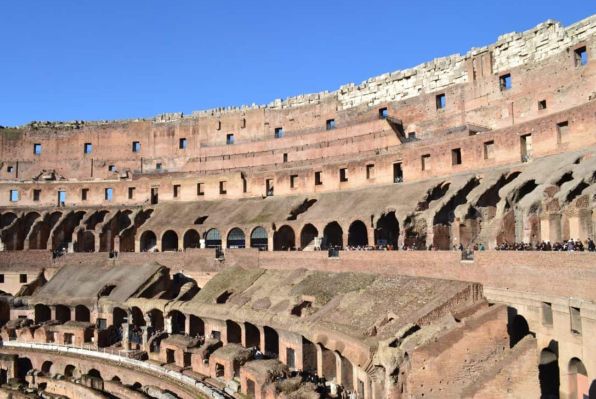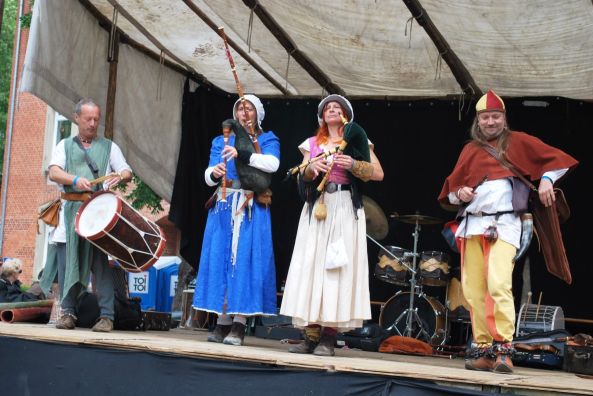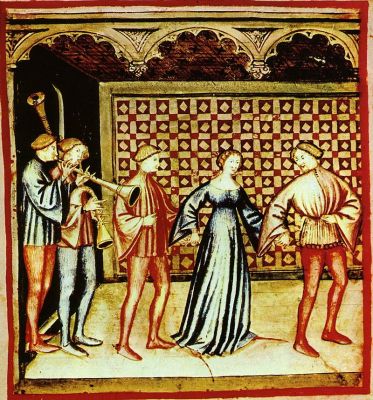Medieval Theater – Origins, Genres and Characteristics
Contents
What is Medieval Theater?
Medieval theater takes the form of liturgical drama that was staged in the Roman Catholic Church. Likewise, this theater was often performed through pagan and popular festivals. Thus, in the 10th century, the different ecclesiastical rites, such as the mass, were performed as a dramatic representation.
It is considered that at the beginning of the Middle Ages in practice there was no medieval theater because the stages that had been built by the Greeks and Romans were already archaeological remains. Therefore, the stages on which this theater was performed were in churches and cathedrals, so it was only allowed to represent the religious.
Thus, dramatizations of evangelical and biblical stories were staged in a solemn manner and with ecclesiastical clothing, to which were added, according to the characters, identifying elements such as wings, crowns, capes, among others. The female roles were played by young clergymen.
An emblematic representation were the Christmas acts in which the people also participated. Likewise, representations of medieval theater are still preserved today, declared World Heritage by UNESCO, such is the case of the “Mystery of Elche”, on the assumption of the Virgin, which is still represented today as it was at that time.
How did Medieval theater develop?
The Medieval Theater is formed by the spectacles of jesters and minstrels that combined stories with lyrical poetry, music, acrobatics taken from the comic characters of the Roman theater. Likewise, the popular farces of minstrelsy roots, written and represented by Adam de la Halle, of French origin, are also taken into consideration, as well as the so-called moralities of didactic character.
This theater has different manifestations in each European country. Thus, in England the so-called “fools” (madmen), minstrelsy jesters went to the courts, inns and public squares, making their representations. Also the guilds celebrated their patrons with public stagings of saints’ lives on temporary boards. Meanwhile, in the courts, the so-called “masks”, masquerades accompanied by music and dances, took place.
In Germany, medieval theater was timidly initiated with the so-called “meistersingers”, master singers, and the famous carnival celebration. Similarly, in Bavaria, the popular passion play, which is a mixture of the religious and the profane, is still preserved today.
In this sense, the sacred drama of the medieval theater is gradually changing its setting, being taken to the street, to the public square, gradually incorporating profane elements. Nor was the church condemned by the fact of performing these religious shows, nor were people excommunicated for it. So there was a wide audience, people of all social classes: villains, artisans and nobles, sometimes even the king himself participated.
In Spain, Alfonso X the Wise, staged the legislative work of the Seven Partidas, in which clergymen were allowed to act out Gospel passages, such as the Nativity, the Adoration of the Shepherds and the Kings, as well as the Resurrection of Christ. However, at the same time, profane representations are not allowed within the Church and the preserved ancient texts have anonymity, such is the case of the Act of the Magi, from the 12th century.
However, the first known actor of these plays is Gómez Manrique, with plays of religious themes in which profane and popular elements are already identified. But in the 15th century, representations of public squares called “Dances of Death” are identified, text of the latter author, incomplete. Therefore, the dance of death was a dance with death personified that invited individuals of all social classes and ages to dance.
People engaged in a dialogue with death, and the chosen one refused to accompany her in her dance, but in the end, inevitably joined her, and for each dialogue the number of dancers increased. In the theater, the egalitarian nature of death was experienced in a world with social and political turbulence, great inequalities, and also hit by the black plague and war.
In the same way, there is another actor writer called Lucas Fernandez who begins the staging of the adoration of the shepherds, dialogues among them, in nature, incorporating plebeian characters that motivated laughter in the noble courtiers. Of them there are songbooks with eight theater pieces, for representation in the court, of profane subjects, although they were related to the religious.
In Sicily, Italy, there is knowledge of a simpler theater that was that of the traveling companies that traveled through Italy. It was a theater of filakes, which produced the farces atelanas. It had no text, popularizing diverse comic types: the macus or greedy, the buccus or stupid, among others. Therefore, this theater nourished the popular theatrical forms of the Middle Ages and influenced comedy in the Renaissance.
Similarly, in the eleventh century Latin was implemented in place of the vulgar languages. Therefore, the stagings were taken from the atriums to the public squares complicating the decoration and already in the XIII and XVI centuries great platforms were raised, on which the different stages were installed.
What are the types of Medieval theaters?
Medieval theater is divided into two types: Medieval itself and profane.
Medieval Theater
This first theater was considered as a primitive theater and was constituted by the religious representations that took place in the temples, in portals and atriums, on themes taken from the Bible. They were stagings of the mysteries, also of morality, with allegorical characters.
Profane Theater
It was divided in turn into cultured and popular profane theater.
Cult Profane Theater
The stagings were carried out in the courts and in the schools on classical Greek and Latin themes.
Popular profane theater
The stages were performed in the open air, acted by comedians and minstrels in the communities, with performances lasting from two days to a month, every four or five years.
On the other hand, the emergence of the medieval theater, is given by several reasons, among them, the involution of the Roman theater, product of the moral decadence of the Roman empire, also there was an insensitivity for the theatrical of the Teutonic conquerors, in the same way, the hostility for these acts that the Church presented.
Therefore, the dramas and rituals in the communion mass of the 4th century, acts such as the Palm Sunday procession, the antiphonal were considered as theatrical performances that made up the medieval theater. Thus, the core of the mass was fixed and constant, however, sometimes so-called tropes could be integrated.
One of the relevant types of profane medieval theater was the drama performed in the masses, with a moral and edifying content. In the liturgy, short dialogues in Latin were developed and then small scenes were introduced with characters from the Old and New Testament as well as from the life of the Saints. The scenes were considered props or background elements, such is the case of the Sepulcher, heaven, hell, limbo, the Temple of Jerusalem, the stable of Bethlehem.
Therefore, it is known that the first play staged outside was the play of Adam, performed in front of the church, whose stage was constituted by a crucifix, then paradise was staged, with fragrant flowers, and trees with outstanding fruits, hell which resembled a place with mansions, heaven and a place where Pilate and his men were located.
Thus, a theatrical play was staged and the protagonist is confronted with characters of various moral attributes who try to lead him to a good life. The protagonists of most of the moralities represented humanity and a social class as well as the secondary characters were categorized as good and bad.
Who are the main representatives?
Literature reports the year 1765 for the denomination of the moral drama, however for the church it was rather a “moral interlude”, a “sententious interlude”. Therefore, it is considered that the first play approved by the church was the play of God’s prayer, in which the biblical characters and their persecutors were replaced by allegorical figures, since both the characters and the abstract things sought to save the soul of man.
Similarly, the works of Everyman and Jedermann, began very innocently, as a feast for the lesser clergy, however, in the twelfth century the feast of fools became very offensive because they began to allow unseemly songs and dances in church, playing cards and dice in front of the altar, finally, making a mockery of the mass itself.
Therefore, Pope Innocent III issued a bull ordering the exclusion of the mysteries in all churches. As well, the bishop of Lincoln identified the mysteries with libations, and other bishops censured the ludi or popular comedies. In addition, there were problems with mystery scenes that included devils and hell.
Nevertheless, in the Middle Ages men left their shoemakers’ bench or carpenters’ workshop to play characters, and many argue that amateur farce actors in Paris soon turned professional and presented their comedies in closed venues, charging comfortable prices.



